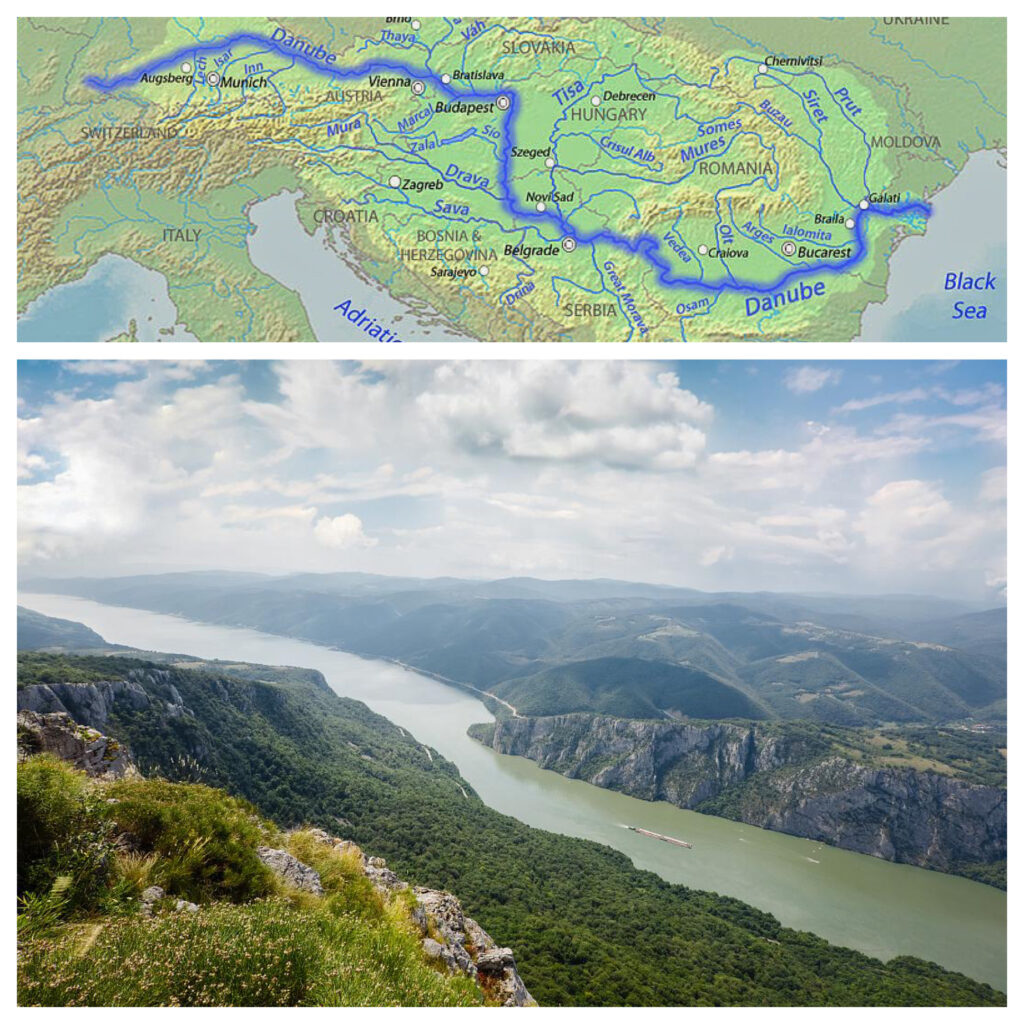Each year on June 29, communities across Europe gather to honor one of the continent’s most vital natural corridors: the Danube. Celebrated as Danube Day, this date commemorates the 1994 signing of the Danube River Protection Convention, a moment that marked the beginning of sustained international cooperation along the river’s 2,800-kilometer journey. From the Black Forest in Germany to the Black Sea in Romania, the Danube flows through ten countries and drains parts of nine others. It links four European capitals and sustains over 80 million people.
But Danube Day is not simply about a treaty: it is about the relationships this river has nourished for millennia. It is a day to recognize not only the ecological importance of the Danube, but its cultural, economic, and emotional resonance across borders.
What the Danube Gives Us
The Danube is far more than a river on a map. It has been a source of life, a transportation route, a geopolitical frontier, and a wellspring of imagination for centuries. Its waters irrigate farmland, feed fisheries, power hydroelectric plants, and provide drinking water to millions. It is home to a vast array of flora and fauna, including endangered sturgeon and countless migratory birds.
Yet perhaps its most overlooked contribution is its power to connect. The Danube is Europe’s only major river that flows west to east, challenging the continent’s traditional orientation and fostering encounters between cultures, languages, and worldviews. In that way, the Danube has long been both a literal and symbolic bridge.
The Danube Delta: A World of Its Own
Where the Danube ends, a new world begins. In Romania and Ukraine, the river fans out into Europe’s largest remaining natural wetland: the Danube Delta. Here, channels twist through reeds and willows, pelicans glide across vast lakes, and the pulse of life moves more slowly, shaped by tides, weather, and tradition.
The Danube Delta is a place of extraordinary biodiversity and human resilience. It is a UNESCO World Heritage Site and Biosphere Reserve, home to over 5,000 species of plants and animals. But it is also home to people, fishermen, farmers, and families who have lived for generations in harmony with the waters. In recent years, this fragile balance has come under strain. Climate change, overfishing, pollution, and poorly implemented conservation policies all threaten the ecosystem and the livelihoods of its inhabitants.
On Danube Day, we are reminded that the delta is not a distant periphery. It is the culmination of the entire basin’s choices. Every piece of plastic thrown upstream, every unregulated dam or development, eventually flows here. And yet, the Delta is also a source of wisdom. Its communities have adapted for centuries, demonstrating how to live with water rather than against it. Their stories are not only local: they are globally relevant lessons in resilience and coexistence.
Rivers and Global Security
In today’s world, environmental issues are no longer separate from matters of international stability. Water security is global security. Transboundary rivers like the Danube remind us that environmental challenges do not respect borders, and mismanagement can lead to regional tensions, displaced communities, and ecological collapse. As the Danube flows through both EU and non-EU countries, it embodies the complex dynamics of cooperation and competition in shared resource governance.
From a global security perspective, the Danube represents both a risk and an opportunity. On the one hand, rising temperatures, extreme weather events, and pollution threaten to destabilize critical infrastructure, food production, and local economies throughout the basin. On the other hand, the river also serves as a case study in peaceful cooperation. The legacy of the Danube River Protection Convention, renewed through annual Danube Day observances, offers a model for diplomacy centered on shared environmental stewardship.
The delta itself is a microcosm of climate vulnerability and resilience. Here, we witness how shifting fish populations, rising salinity, and changing flood patterns reshape local livelihoods. We also see how communities rely on informal governance structures and traditional ecological knowledge to survive. Their experience challenges rigid security frameworks and reminds us that safety, in the context of climate disruption, often means maintaining access to clean water, food, and stable homes.
In this way, Danube Day becomes not only a local celebration, but a moment to reflect on the role rivers play in regional peace, cross-border solidarity, and long-term global stability.
A Personal Reflection
Having spent the past year living and researching in the Danube Delta as part of a Fulbright project, I have come to understand the river in a deeper, more intimate way. I have listened to elders speak of changing seasons, walked through villages where life still revolves around the tides, and witnessed the tension between regulation and tradition. In every encounter, I saw how the Danube is not just a physical presence but a part of people’s identity.
What I have learned is that protecting the river means listening, to science, yes, but also to the voices of those who live along its shores. Their knowledge, born of experience, is as crucial as any hydrological report. On Danube Day, we must celebrate not only the river’s beauty, but the people who care for it every day.
Looking Ahead: A Shared Responsibility
Danube Day is not a one-day event. It is an invitation to imagine a future where rivers are treated as living systems, not just pipelines or political boundaries. It challenges us to think about how our choices, whether we live in Vienna, Belgrade, or Tulcea, ripple downstream.
So today, let us celebrate the Danube not only with festivals and fanfare, but with a renewed sense of duty. Let us protect its waters, uplift its communities, and ensure that its journey from source to sea remains a source of life, meaning, and unity for generations to come.
Happy Danube Day!

